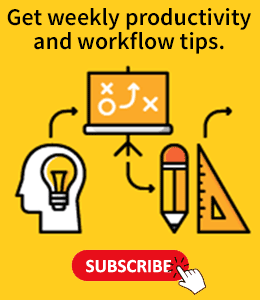Feedback vs. Feedforward
By Katy Reid ![]() | Published May 12, 2021
| Published May 12, 2021
Every experience, task, and project can teach us lessons in how to improve. One of the most beneficial ways to learn is by hearing the perspectives of others. If we don't step outside our own perspective, we risk not seeing what could have been done better or that there might be a more efficient way of completing a task. Most people would call this method “feedback” or “constructive criticism,” but is this really the most effective way to measure someone's performance? This article will dive into the advantages and disadvantages of feedback, as well as a new method called feedforward.
Feedback
Feedback is defined as “information about reactions to a product or a person's performance of a task which is used as a basis for improvement." The message delivered is either positive reinforcement or constructive criticism, and it is typically the latter. Feedback is often provided in the form of an "information dump," with several parameters being calculated and commented on simultaneously. This may be a relatively inefficient method of assisting people in their growth. Additionally, it is presented once actions have been completed, meaning that the focus is on past events. This can make work hard to navigate because there is no one coaching you along the way, only at the tail-end when it is explained how to do better next time around.
In these circumstances, feedback is seldom appropriate. Instead of one-way teaching and critique, what you really want is an open, truthful, two-way conversation that reinforces relationships. Receiving feedback can be especially confusing and discouraging if you had made a mistake and learned from it yourself, only for it to be brought up days later from your supervisor, reminding you of your mistake. This can instill a negative connotation associated with feedback and cause further demotivation. A poll found that only 26% of employees felt that feedback was effective in boosting their performance. Feedback is one-way (manager to employee), episodic (i.e., infrequent and isolated), and focused on previous errors that cannot be corrected. Even so, guidance alone does not equate to excellent coaching. While feedback only captures a sliver of the picture, there are ways to shift focus to create a more positive and encouraging approach. Improving suggestions, or how you communicate your observations and ideas to others, is a simple task if you change the perspective and open the dialogue to a two-way conversation.
Shifting the focus
The issue is that most employees experience feedback as a critique that arrives way too late in the game. When provided in a timely and positive manner, feedback can be profitable. Negative feedback is sometimes turned into a game of "let me show you how wrong you were." This usually results in defensiveness on the receiver's part and discomfort on the sender's part. Even constructively delivered criticism is often seen as derogatory because it entails a discussion of errors, shortfalls, and challenges. On the other hand, feedforward is almost always regarded favorably because it emphasizes solutions rather than challenges.
Feedforward
Feedforward, contrastingly, is centered on the now and the future. In ongoing, middle-of-the-action coaching discussions, feedforward places the employee's talents and career possibilities at the forefront.
They carry the conversation on the topic of the future. What will we do differently next time to increase our odds of success? What does it take to go beyond and above our expectations? What will we do to get ready for the future?
Difficult discussions get more straightforward as a result of opening the door to better conversations. Significant problems are no longer unexpected; you may anticipate them and, ideally, take action before they become a concern. For example, after messing up a huge presentation with your supervisor present, instead of making you relive the humiliation, your manager might instead give you suggestions for the future and how to better prepare. The suggestions can still be specific and said in a way that's beneficial and positive—this way, the same points are still made without generating further humiliation.
Coach, don't criticize
Using errors or shortcomings as ways to educate and encourage improved results in the future is what feedforward means for managers. Consider wanting to have a difficult dialogue before the busy, two-way street is built. If you haven't already built up any empathy and confidence with your coworker, addressing delicate issues like diversity and inclusion, compensation, advancement, or underperformance can feel frightening. Coaching is about using positive emotions to promote learning experiences. The most powerful kind of feedforward aids individuals in seeing opportunities for advancement—ways in which they could take on new responsibilities and tasks.
Wrapping up
It's impossible to advise people how to improve easily or straightforwardly. It's no wonder, then, that we're all working it out and refining it. Try switching to a feedforward method if the input you're sending or receiving to your managers, coworkers, or even family members isn't having the desired effect.
Tags
feedback feedforward criticism input
Categories
Productivity Tips

Katy Reid
Katy is a member of the Integrify Marketing team and writes on a variety of subjects for the Integrify blog as well as managing Integrify's social media presence.

